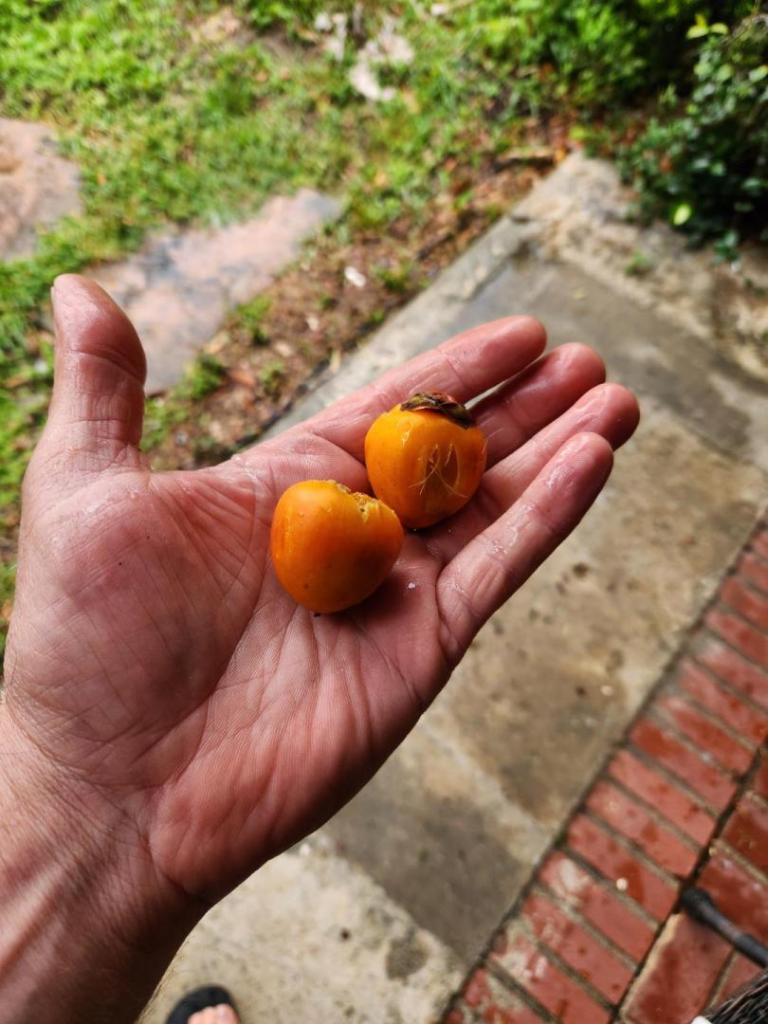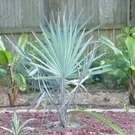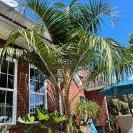All Activity
- Past hour
-
Plantdaddy17 joined the community
-
-

RPS Jubaea chilensis x Butia odorata F2 Blue Jubaea
Scott W replied to Joe NC's topic in COLD HARDY PALMS
Curious what is your source of this info, as I know of one Jubaea x Butia that is producing fertile seed and several others that are producing seed with no pure Butia nearby. Below pics are recently harvested fruit and seeds from Jubaea x butia hybrids produced by Patrick Schaefer. Jubaea x butia seed compared to pure Butia seeds - Today
-
I also have them in full sun sunrise to sunset up on slopes. I hand water them. They seem to have stalled a bit after growing néw spears quickly. We will see! Hope yours do well
-
Moving a +30 yo
Silas_Sancona replied to et_in_sf's topic in TROPICAL LOOKING PLANTS - Other Than Palms
That's a good question .. Think if you keep them wrapped and moist, you should be fine for a day.. You're nowhere near as hot / dry as it is here, and they are fairly tough plants so, ..as long as the total project won't take longer than a day, i don't see why the plants will react adversely. Would definitely poke around under them to see just how much root mass there is / how easily they'll lift before completely uprooting. From the pictures, they don't look too big / shouldn't have a large root system, ..like this one posted on Pinterest **Picture credit, whomever took it ** Thinking this is one of the specimens in the Madagascar Garden down at the L.A. Arboretum.. Can see an Uncarina, Another fat trunked, succulent- like Genus of plants from Madagascar, on the lower left in the background ) -

Great Grandaddy Nannorrhops Ritchiana
LowDesertBoil replied to LowDesertBoil's topic in DISCUSSING PALM TREES WORLDWIDE
It's even more impressive standing next to it! I was in awe! I have never seen a palm that large in person haha. -

Moving a +30 yo
Darold Petty replied to et_in_sf's topic in TROPICAL LOOKING PLANTS - Other Than Palms
ET , Welcome to Palmtalk ! -

30th anniversary of the infmaous 1985 arctic outbreak
kinzyjr replied to SubTropicRay's topic in WEATHER / CLIMATE
Good point. We can only base predictive analytics on known factors. -
I have lost two over the years , they can be hit or miss. I had one for several years and it was doing very well….until it wasn’t. The other one died a year after planting. I have learned a lot since then and realize that they like warm , if not hot , place in the garden . Also not too much water . I hand water now so I think with the two in the ground , I can keep them happy . Also the ones I’ve seen that do well were planted close to a wall for warmth. HarryThese have been in the ground for a few weeks and are growing well. This spot gets full sun and reflective heat until about 1 pm. The Rhapis get a bit more shade in the corner as does the Microspadix. I paid $10 each for them. Harry
-

Great Grandaddy Nannorrhops Ritchiana
Xerarch replied to LowDesertBoil's topic in DISCUSSING PALM TREES WORLDWIDE
That huge! Nice! -
@2palm the pictures are a little blurry, but the "holes" look a bit like cracks. The base of palms frequently splits a bit as the trunk grows to mature diameter. If that's what happened then it is probably "normal." I'd agree it is a bit too high in the ground, generally you want it right at the RIZ (Root Initiation Zone). That's right at where the big round roots come out of the base. Being planted slightly high is safer for rot than a little too low, but MJ is correct it can cause "air girdling" and future growth problems. Here's a good tutorial on planting depth from a PTer, I think he is a local Palm Society Director. http://www.marriedtoplants.com/palms/palm-tree-growing-tips-mounding/
-
My grandmother telling me about Miami that day….. Seriously though…. Must have been quite a sight, even though it didn't reach near the ground in Miami. Kids and even adults who had never seen snow flurries in their life, got to see them in person for the first time and were pretty excited. A crazy thought for those of us that grew up pushing through waist deep snow drifts for half of every year.
- 101 replies
-
- 1
-

-
- discussing palms
- tropical
- (and 3 more)
-
.jpg.0cf735c7525858af1582442942bc68e8.thumb.jpg.894f59a749fff01eb286c1fe4a50ab62.jpg)
Anyone in U.S. try Lanonia dasyantha in ground yet?
peachy replied to Missi's topic in DISCUSSING PALM TREES WORLDWIDE
Does the sun affect the maculation at all please ? Peachy -
Days have been in the double figures all week but the wind has a nasty bite to it. Weeds are a real bother right now and I have to water constantly. I am just seeing the garden as a chore lately and getting no pleasure from it. Hopefully this flat feeling will wear off soon. Peachy
-
No I didn't dig a trench partway beforehand or anything. I used a all steel type shovel (Wolverine https://pacforest.com/Item/21 ) and dug it out in about 1 hour by digging a narrow trench around and undercutting it. used furniture moving straps to hand pull it over and washed off some clay mud to lighten it. then pulled it out of hole with car after it was apparent that doing it by hand was impossible without about 4 people. Stood it upright and put on a dolly and rolled it over.
-
Aceraceae started following 30th anniversary of the infmaous 1985 arctic outbreak
-
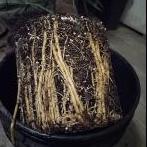
30th anniversary of the infmaous 1985 arctic outbreak
Aceraceae replied to SubTropicRay's topic in WEATHER / CLIMATE
Fairchild tropical botanic garden in coastal Coral Gables had a low of 26 F in 1989? When the airport only hit 30 F? And lower than Miami's all time low of 27 F in 1917? -
A few months ago several local Home Depots here got a bunch in. 10 gallon pots. 6 ft tall. Super nice big healthy specimens. $109. So I got two about 2 months ago and planted in the ground. Clay soil but I did some 50/50 amendment a bit around the root ball. The new spears have grown about 12 inches so far and they look fine but not growing as fast as I would have expected. The info tag says 30F+ zone 10
-
@Borosbobo it looks like a crown rot to me. It will kill your palm if not cured, though some just grow out of it. I have cured several of my palms using doses of hydrogen peroxide followed up by Daconil a couple of hours later. Repeat a couple of times per week until the H2O2 stops bubbling on contact. I would also try lightly pulling up on the brown spear to see if it pulls out.
-
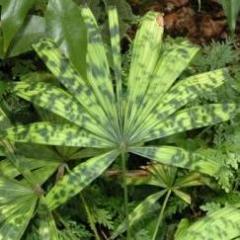
Great Grandaddy Nannorrhops Ritchiana
Palmarum replied to LowDesertBoil's topic in DISCUSSING PALM TREES WORLDWIDE
Impressive.... most impressive. A great save if the palm was going to be destroyed. Ryan -
Can you elaborate a bit more about how you dug the hole? Just a (root slayer) shovel? Did you dig a trench beforehand to get underneath it better?
-

Great Grandaddy Nannorrhops Ritchiana
LowDesertBoil replied to LowDesertBoil's topic in DISCUSSING PALM TREES WORLDWIDE
Haha! Yes, this is something that you don't see every day! My friend is very good at what he does! -
Thank you very much Silas. Do you feel that the Pachypodium could survive being out of soil for a day? The project is looking larger than I initially expected. Rushing the process would probably increase accidents. I’d be laying them down on a blanket, moisten the area where the roots will be laying (moist, not wet), cover the roots loosely w/ a bin bag, in a garage. (BTW, your comments have lessened my appreciation of the task ahead.)
-
Great Grandaddy Nannorrhops Ritchiana
Harry’s Palms replied to LowDesertBoil's topic in DISCUSSING PALM TREES WORLDWIDE
Sweet ! I can’t imagine such an undertaking , moving something that large , serious work. Harry -
It could be the "Bushman's River" hybrid, Alt x Tri or the reverse. But it could also be be something else, as Dale noted they are hard to positively ID. I have one with very similar leaves as an Altensteinii x Lehmanii, I will try to remember to take a picture tomorrow.
-
That place should be held responsible for palm abuse! Those are some pretty neglected palms. You may have gotten the best one. That being said , I would have brought at least one or two home , just the way I like them ! I sometimes find palms that need rescue and take a chance , forgotten stock or just neglected. There is a sense of accomplishment when they come back. Make it happy and it will respond. Harry
-
So I bought 5 Wodyetia last fall that were not the happiest I’ve seen but too good to pass up . I knew at least two would pull through if I gave them a good place to winter down. I was concerned because , as luck would have it , we had an especially wet year. It was more than double our normal rainfall , and Wodyetia don’t like extended wet conditions . I posted in an earlier thread that two are now in the ground and growing fine . The other three were sad and showed no signs of growth. The fronds turned brown but the spears remained green . I checked every time I thought about it and they were dormant . Imagine my surprise when I was working around the garden and saw this . The fronds died weeks ago and I cut them off. The other two ( you can see one in the background ) are just sitting . The spears are green but no growth, I refuse to give up! Harry


